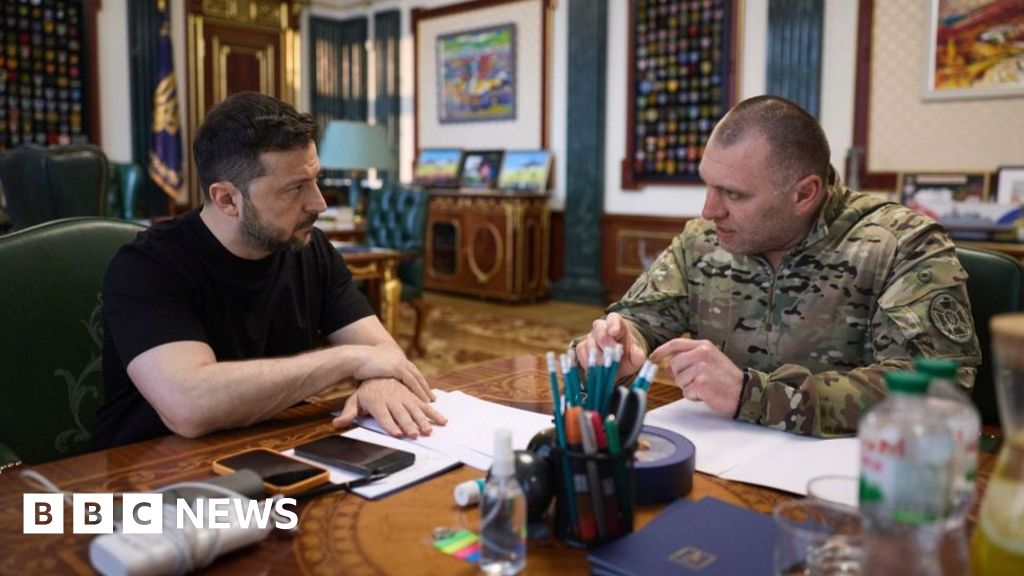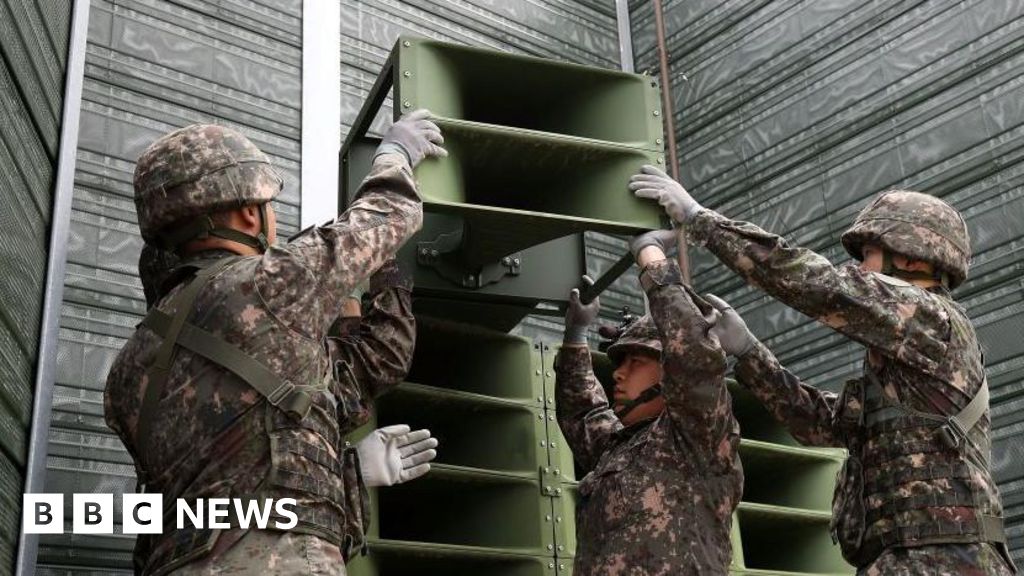
Michael A. FletcherJun 5, 2025, 08:00 AM ET
- Michael Fletcher is a senior writer with ESPN's enterprise and investigative team. Before that, he wrote for ESPN's The Undefeated, focusing on politics, criminal justice and social issues. He spent 21 years at The Washington Post, where his beats included the national economy, the White House and race relations.
ALTADENA, Calif. -- NEARLY FIVE MONTHS after the Eaton fire reduced his rented home to ashes, Carl Walton still lives mostly out of his car. Walton, 42, stashes most of his belongings in a storage unit more than an hour from his former home, and he sometimes showers at the gym. His workout gear and other necessities are stuffed in duffel bags he keeps in his burgundy-colored Jeep Compass.
One for martial arts and boxing. One for yoga. And yet another, along with his portable table, for massages. There was a bag he used for his job loading trucks at UPS until he was laid off in March. There is also a bag for running, something he started taking more seriously two years ago when he joined the Pasadena Run Club.
Before the fire, running had become a way for Walton to recalibrate and to stay in shape for his other athletic pursuits. What started as a way to keep his body tuned gradually became something more. The club gave him community. And in the disoriented months since the fire, it gave him something close to salvation.
In the uneasy days that followed the blaze, the club was suddenly doing more than logging miles. It raised more than $1,000 and split the money among several members who had lost their homes. The gesture was modest, but meaningful.
"It's a little drop in the bucket," said Lidia Garcia, the club's founder and a clinical social worker. "Half of it is keeping your chin up, keeping your spirit up. Obviously, you can't rebuild a house with one thousand dollars. But maybe now they can get some shoes so they can go back to running without feeling like they're breaking the bank."
The gift mattered. But so did the message: You are not alone. In the immediate aftermath of the disaster, club members mobilized. They partnered with other local running groups to distribute food, spread word about emergency housing and direct survivors to counselors and aid. They gathered leads and made calls. Since then, the club has only expanded its reach.
In partnership with The Langham Huntington, the historic Pasadena hotel that once hosted presidents and film stars, it is organizing a charity run set for June 22. The proceeds will go toward restoring recreational areas damaged by the fire.
Some went further. "I was part of a group of 20 people looking like a flash mob running around with chain saws," said Jason Seto, a data science manager who has been with the club for three years. "People were out there with garden hoses and weed whackers, and axes, just cutting down trees and trying to get things clear so cars and ambulances and other emergency vehicles can get by."
They cleared roads. They checked on each other and dug through the ash. But members of the Pasadena Run Club know the work that comes next is less visible. The backbreaking labor of recovery is one thing. The difficult process of healing is something else entirely.
THE EATON FIRE ignited in the foothills above Altadena on the evening of Jan.7. At the time, Walton was taking a nap, preparing for his night shift at UPS. "My roommate came in the house and was like, 'there's a fire out there.'" Walton looked at the orange glow in the distance and dismissed it as an ominous yet manageable spectacle. "I was like, shoot, that's Echo Mountain," Walton said.
Knowing the mountain was a couple miles away, he wasn't too concerned as he prepared for work. He told his roommate to let him know if the situation changed. "I said 'text me if we have to evacuate,'" he said.
Before long, the fire surged. Driven by powerful Santa Ana winds, it scaled canyon walls and raced downhill into Altadena and nearby communities that had always existed with the threat of wildfire but never experienced this type of inferno. Entire blocks caught fire, destroying almost everything. The intense heat blistered asphalt and caused trees to burst into flames. "In the middle of the night I got that text," Walton said. "I said, 'I got to go,' and they let me leave."
Walton was redirected by first responders who had blocked off his neighborhood before he could finish the 20-minute drive home. Walton retreated to an evacuation center in nearby Pasadena, where he connected with his roommate. Once the sun rose a few hours later, the two of them tried again.
"It was like World War III going up there," Walton said. "Everything was on fire on both sides of the street. Power lines were down. Plus, we had to get around the roadblocks."
By the time Walton reached the house, its roof was ablaze. He wrapped a cloth around his mouth and darted through the front door. But the heat was too much, the air too thick. He barely made it inside before the fire pushed him back.
Moments earlier, he had owned things. Not many, but enough to stake a small claim on a future. A brand-new massage table and chair -- purchased that day -- were meant to mark the start of something new. Training gear, his martial arts instructor's certification, a passport, a laptop, the fragile frameworks of his life. All of it now smoldering ash. Just a month earlier, he had moved into the modest house in Altadena after years of rented rooms and sad apartments. Now the place was gone, and with it, any illusion of permanence. He had no insurance, no real fallback, just the echo of a life paused once again.
"The only thing I had were the clothes on my back," Walton said. The fire was not his first. Decades earlier, in a childhood apartment in Long Beach, another blaze had consumed everything his family owned. It had left behind only a sobering clarity: Stability is a promise easily broken. Ever since, he had been chasing something more solid. He thought he had found it here. Walton spoke in a low, measured voice of someone trying to hold things together, even as the pieces kept slipping.
"I've spent a long time moving from place to place, renting bedroom after bedroom," he said. "There, I thought I had a two-year plan. Maybe I could get some money together. Maybe even buy a property. But that's knocked off right now."
Since the fire, his life has become a zigzag path of temporary shelter. There have been hotel rooms and Airbnbs, short-term solutions provided by relief agencies that often solved one problem while creating another. Two of the places required him to share a bathroom with five strangers, an uncomfortable return to the instability he had been trying to escape. Another, he said, had three aggressive dogs roaming the property.
Most nights now, he crashes on the couch in his aunt's small apartment in Long Beach, the same city where he grew up. Still, he clings to hope, knowing things could be worse. "I'm grateful, because I'm here and I still have my car," Walton said. Then he paused, as if weighing whether gratitude was enough. "But there are a lot of kinks to work through right now. You know what I mean?"
BY THE TIME the Eaton fire was declared fully contained on Jan. 31, it had consumed more than 14,000 acres across the San Gabriel Valley, destroying at least 9,400 structures. The fire incinerated homes, businesses, schools, churches and cars, reducing entire neighborhoods to a hellscape of toxic ash and scorched rubble.
Eighteen people were confirmed killed in the blaze, and more than 100,000 others were forced to evacuate. The fire was among 18 that ignited across greater Los Angeles in January, burning nearly 51,000 acres. By the time the fires were contained, at least 30 people were dead, dozens more were injured, and entire communities were destroyed. One estimate put the economic toll as high as $131 billion.
In Altadena, many places looked like a bomb had gone off. Steel mailbox poles leaned at impossible angles. Front steps led to nowhere. Brick fireplaces stood sentry over the charred ruins. In most spots the landscape was burned beyond recognition.
"The mountains were my backyard," said Ron Ferraz, who helps lead the run club with his partner, Garcia. "I rode there every day. I'd seen fires before -- they'd flare up, the helicopters would come, drop water and it'd be over. This time was different. It just kept going. It didn't stop."
He still rides, but not through the same terrain.
"You can't recognize it," he said. "The climb up doesn't look like anything I've seen before. And I was there all the time."
The fire didn't just take homes and businesses. It also took away the ground that some club members ran on. Several trails that runners used for hill work are closed at least until the end of the year for repairs, and to allow for the recovery of charred land.
Garcia founded the Pasadena Run Club in 2021 as a modest effort to connect people to one another through the sport. Shaped by Garcia's belief in wellness as a social practice, which members say is unusual among the more than 100 running clubs in the Los Angeles area, it has attracted serious runners, as well as beginners. Its mailing list has more than 1,000 names, ranging in age from 13 to the mid-70s.
The club does not focus on pushing the pace. Instead, it extends an open invitation: meet each Wednesday evening at the Lululemon store in Old Town Pasadena and move at your own rate, and someone will be there to encourage you. The club offers a 2.5-mile walk, or 3- and 5-mile run options through the streets of Pasadena, and even now as many as 150 people take part each week -- about the same number as before the fire.
The more serious runners spend the rest of the week following their own routes, some that once wound through the now devastated communities like Altadena and the mountain trails overlooking the area.
"People do their own thing," Garcia said. "It's not like a competitive group where everybody has a training schedule, even though there are those who do. And we have had certain races that we wanted people to do throughout the year just to feel like they were working towards something. But the fires kind of threw a big monkey wrench into what that would look like."
The fire left ultrafine particulates, carcinogenic ash and other poisons in the air. The public health advisories were urgent: Stay inside, don't exert yourself and wear a N95 or P100 mask if you must go out.
The club was forced to adapt. Unable to train along their usual city routes, the runners moved indoors for seven weeks, organizing treadmill sessions at a local fitness studio. Others fled the smoke entirely. "Some of us who were training for races were driving to places where the air was a little bit safer," said Seto, who was preparing for a half-marathon in the weeks following the fire. "I've been driving down to Newport Beach, which is about an hour south of here to do my run. I couldn't run around here because of the mixture of the air quality. And I think mentally it was just too difficult."
Agencies from the federal, state and county governments moved swiftly through the initial phases of cleanup: removing toxic debris, household chemicals and unstable remnants. The next step, clearing what's left, will take months. The U.S. Army Corps of Engineers and Los Angeles County say that 88% of the debris in Altadena --1.3 million tons -- had been removed be the end of May.
TIANA HILL HADN'T grown up with fire seasons, having moved to California from Arizona four years ago. She's 49, an associate mental health therapist and a regular presence at the Pasadena Run Club, where for the past two years she's found a running routine and a circle of friends.
"When I moved here, I didn't have a community, so I was like, I really want to join one of those," said Hill, who said she previously found running to be punishing. "I walked on down to our local club in Old Pasadena and found these lovely people, and I just quickly became part of the community."
On the morning of Jan. 7, she and her fiancé, Joseph Brumfield, sat in front of their television watching live news coverage of a brush fire creeping through Pacific Palisades, 35 miles west. They felt sympathy, distant but real, for the multimillion-dollar homes under threat. "We were feeling so bad for those people in that community," Hill remembered.
Later in the day, there was more news: A second fire had sparked in Eaton Canyon. It was close to home. "That's right down the street from where Joseph grew up," Hill said. "His whole family still lives in Altadena."
That evening, they kept an eye on their phones, checking in with Brumfield's family members -- including his daughter, sister, nieces and ex-wife -- who lived in three houses clustered in Altadena, which for the past half-century has boasted one of Southern California's most racially diverse communities.
Thanks to the relatively affordable prices and the Fair Housing Act of 1968, Altadena became a rare stronghold for Black homeownership in the decades that followed. Unlike other communities, where desegregation provoked white flight, Altadena held firm, welcoming an influx of Black families. By 1980, African Americans made up 43% of the population. In more recent years, Latino and Asian American families have settled in.
"That night we were watching it get closer and closer," Hill said. "We finally told the family to call us if anything changes. We tried to sleep." The call came at 3:30 a.m. Police with bullhorns were moving through the streets telling people to evacuate immediately. Hill and Brumfield still clung to hope that the evacuation was precautionary. They soon learned it wasn't. By dawn, the flames had taken everything. Later that morning, they were driving toward Altadena through a world they no longer recognized. Ash fell like snow. Trees lay across roads. Smoke blocked out the sun and intense heat radiated off the pavement. "Everything was on fire," Hill said. "You could feel the heat in the car."
When they reached the site where Brumfield's sister's home had stood just hours earlier, there was not much left to identify it. "I was like, 'How do you know?'" Hill said. "It was complete rubble."
So was Pasadena Rosebud Academy.
Brumfield, who is currently the VP of business development at ridesharing company HopSkipDrive, helped co-found the public charter school 17 years ago with the dream of creating something his community could call its own.
Serving about 175 Black and Latino students, the school had become a beacon in Altadena, with a reputation for being nurturing, rigorous and grounded in culture. Just weeks before the fire, the school had received a seven-year renewal of its charter, a validation of its success and stability. Then, hours later, the school building was gone.
There was no saving the classrooms, no salvaging the library books or student projects. Just disfigured playground equipment, blackened signs and scorched concrete. Today, its students attend classes six and a half miles away, sharing space on an elementary school campus in central Pasadena. It's a temporary arrangement, but no one knows how long temporary might last. When asked what it was like to lose so much --the family homes, the school, the neighborhood -- Brumfield paused before answering. "It's just tough," he said.
He had spent the morning with his 21-year-old daughter, Sydney, at the ruins of the home she lived in with his ex-wife. She had once been a standout basketball player and is a black belt in karate. Now she was sifting through ashes, searching for remnants of her former life. "She was looking for trophies, for her belts. Anything," he said. "We didn't find anything."
The flames had their own logic as they moved through Altadena, destroying some homes entirely while inexplicably skipping others. But in the aftermath, no one was spared the disruption.
Power was out for two weeks after the fire was brought under control, and some sections of Altadena went four months without potable water running from the taps.
Altadena's Super King Market, a grocery store on the community's west side, reopened in late January. Grocery Outlet, located closer to the heart of the 8.5-square-mile unincorporated town, didn't fare as well. Smoke damage forced the store to shut down for weeks, and it wasn't until mid-February that its owners were able to clean up, restock and welcome customers back.
Still, the broader picture remains bleak. Fewer than one-third of the 746 businesses affected by the Eaton fire have reopened, according to local officials. "They are either lost to the fire or they're still waiting for their landlords to settle with insurance companies so they can remediate and reopen," said Victoria Knapp, chair of the Altadena Town Council.
Fair Oaks Burger, a family-run spot that had been serving the neighborhood for years, was the last structure left intact on its block. In the months since, the restaurant became a hub for the community. Working with World Central Kitchen, the nonprofit known for showing up in disaster zones with hot meals and human connection, the restaurant served free food out of its parking lot.
Now, after months of cleanup, the restaurant is set to fully reopen in mid-June. "Those are the kinds of announcements I love to hear," said Los Angeles County supervisor Kathryn Barger, whose district includes Altadena. "Because it is a step closer to recovery."
Still, the road back is winding and slow.
Burned lots hide invisible danger like lead in the soil from old house paint, and the ash from scorched electronics. Businesses that escaped the flames now face the threat posed by a shortage of customers. Also, many homeowners remain locked in battles to wring justice from insurance companies.
Even before the Eaton fire wiped them out, residents here were already living in the shadow of another slow-moving crisis.
Insurance companies, spooked by the growing frequency of wildfires and other climate-fueled disasters, had begun pulling out, leaving homeowners scrambling for coverage. Many were pushed onto California's FAIR Plan, the state-run insurer of last resort. However, this safety net is beginning to show signs of strain under the weight of the latest catastrophe.
Barger reports that her office has received numerous complaints from policyholders who believed they were adequately covered only to discover that their FAIR Plan policies fell short of providing full compensation. "This fire actually shed a bright light on just how dysfunctional the insurance industry is in the state," Barger said. "When I talk to some people who have the state plan, I find out they have been paying these exorbitant premiums but getting inadequate coverage. They probably never thought they would have to use it but now they're frustrated."
Overall, Barger said a return to something resembling normalcy in Altadena remains years away. "I will feel like we're definitely on the right track when we get to 1,500 homes that have been rebuilt," she said, adding that 10 permits to rebuild homes in Altadena have been issued so far.
"If all goes well, I see that happening in two to three years."
Many people are worried that the cherished character and racial diversity of their community, a rare stronghold of African American economic power in Southern California, will be lost in the rebuild. Some of the burned out lots in Altadena have already been sold, snapped up by investors.
For some longtime residents, the insurance ran out too fast. For others, the thought of rebuilding was too much, or the offers for the land too lucrative to pass up. Black residents comprise 18% of Altadena, and their presence is anchored by home ownership, which stands at 81.5%. That stands in stark contrast to neighboring Pasadena, where Black residents make up 7.7% of the population and have a homeownership rate of 35.4%. Across Los Angeles County, where Black residents account for 9% of the population, Black homeownership rate is 33.5%.
The Eaton fire has left that hard-earned legacy of prosperity in jeopardy. As Altadena turns its focus toward rebuilding, the question hanging over the recovery isn't just how to replace what was lost, but how to ensure that legacy homeowners, so central to the community's identity, are not left behind. "There are signs up saying "Altadena's not for sale,'" Brumfield said. "But the harder thing to see is who is going to stay to rebuild."
IN THE UNSETTLED months since the Eaton fire devastated their community, its victims have begun to reckon with the true contours of the loss of homes, businesses and the familiar rhythms of their lives. Walton has navigated his path to recovery in fits and starts. He lost everything in the fire. But he did not lose everyone.
The members of the Pasadena Run Club, the group that first drew him in with its easy camaraderie, refused to let him fall away. They called. They showed up. They made sure that even if he stumbled, he would not be alone. Now Walton trains when he can, his running schedule shaped by the demands of a life he is still piecing back together.
He is back to offering mobile massage therapy, the work he was doing before everything changed. Between clients, he drives for Uber and Lyft. His GoFundMe has raised more than $11,000 -- enough to buy some breathing room. Through it all, the run club remains a constant, helping him move forward. The group has turned its focus outward, raising money, organizing events, looking for ways to be of use in a community still staggering from loss.
"Part of our culture is that nobody runs alone," Garcia said. "We don't leave people behind."
The fire destroyed buildings, trails and comfort, but as far as Walton is concerned, it also revealed something else: a community willing to go the distance for one other. "People's support has meant a lot to me," Walton said. "The people in the club were pretty cool from the beginning. And after the fire, they've been here for me. Right on standby."


















































